











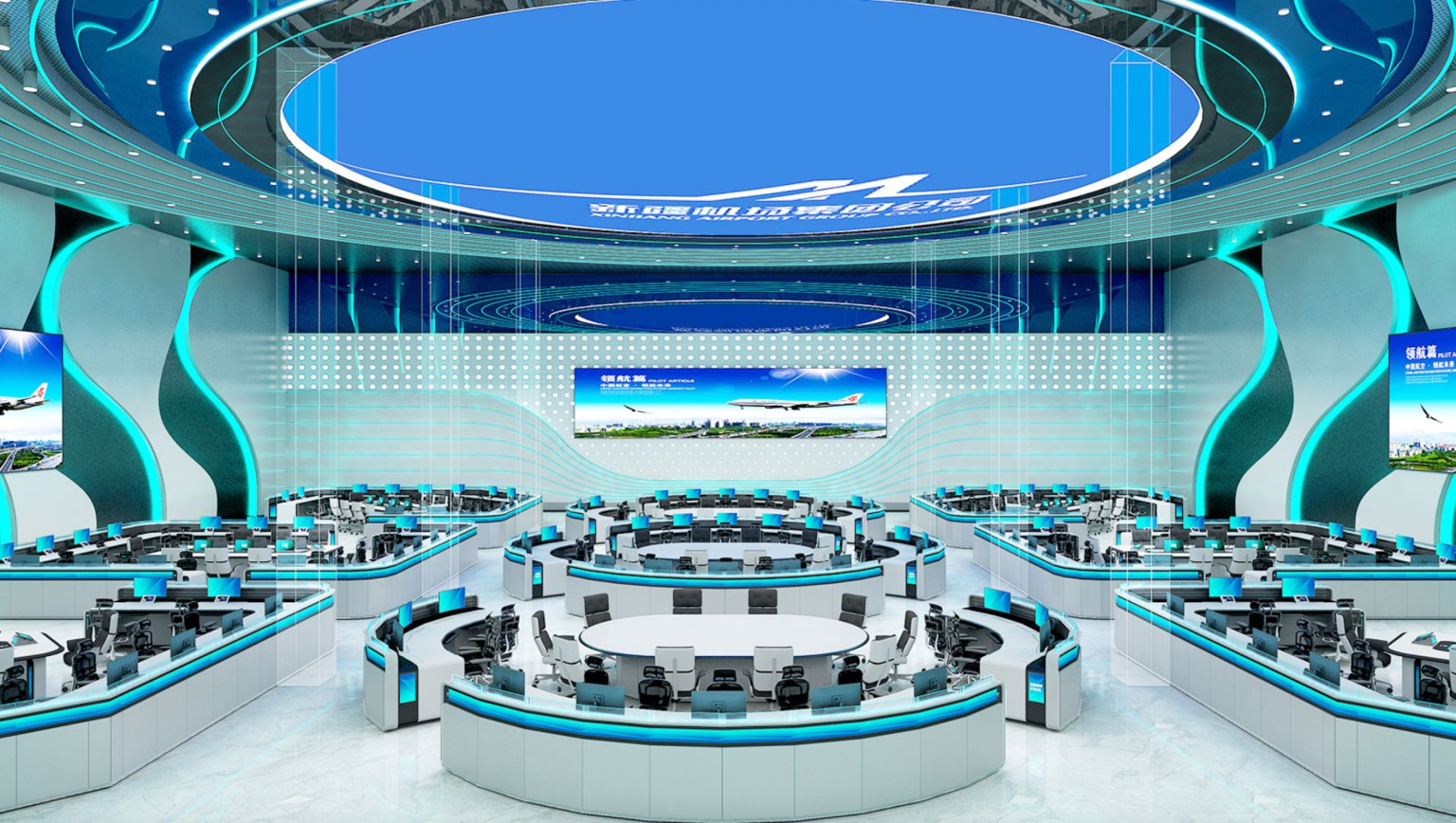
Wisdom Air Traffic Management (WATM) realizes autonomous and intelligent air traffic services, flow management, and airspace management, continuously advancing towards higher stages of development along the path of digitization, intelligence, and smartification. The wisdom of WATM is mainly reflected in the empowerment of various elements of the air traffic management system, namely the air traffic management information environment, aircraft, controllers, and airspace. Addressing the application scenarios of command centers at various levels in the WATM industry, HYAVC provides an integrated intelligent control and collaboration system solution for scheduling and command. This solution establishes a new type of visual integrated audio-video scheduling management platform that integrates multiple services such as communications, signaling, integrated monitoring, and OA office work, enabling flexible handling of various business application scenarios such as daily office work, visits and exhibitions, and emergency command. The system comprehensively covers multiple application scenarios in the civil aviation three-tier management structure, including air route traffic control centers, approach control rooms, airport control towers, meteorological observation and forecasting rooms, communication monitoring rooms, and more. It breaks down information islands and connects multiple types of business systems through a 10-gigabit fiber-optic distributed architecture system, establishing a resource pool. Adopting a fully redundant architecture ensures the secure, stable, and efficient transmission of data across various business systems. This allows command and scheduling personnel to easily, flexibly, and conveniently conduct scheduling and command control, ensuring the safe, stable, and efficient operation and scientific scheduling of various air routes and aircraft in air traffic.
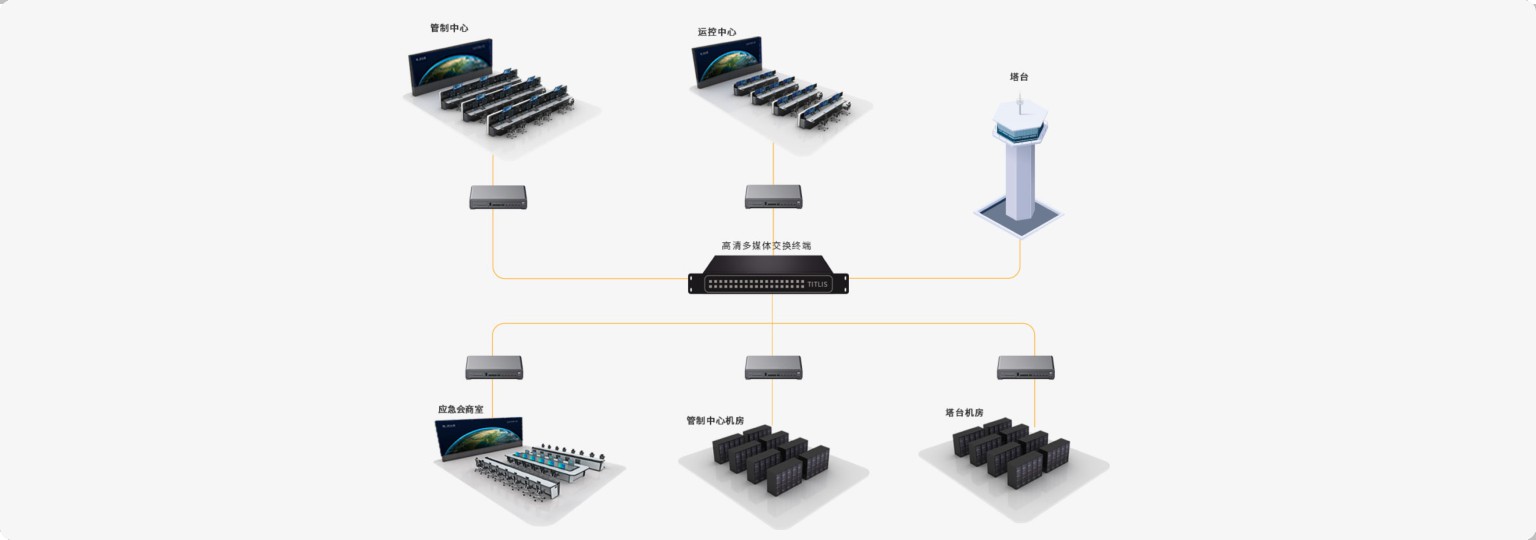
Distributed nodes are embedded with system software, and all nodes use an election algorithm to determine the primary service node and automatically rank the secondary nodes. In the event of a failure of the primary node, a secondary node will take over to perform system management tasks. A failure of a single node does not affect the overall functionality of the system.

Using advanced video and image processing technology, along with a lossless compression data algorithm, the system supports YUV4:4:4 sampling for video at resolutions ranging from 1080P to 4K at 60 frames per second, preserving the image details of the original signal source content.

Through high-speed fiber-optic transmission, the end-to-end screen casting display latency is less than 15ms, achieving seamless switching of audio and video signals, conference dialogue, lip-sync, and seamless console operation experience.
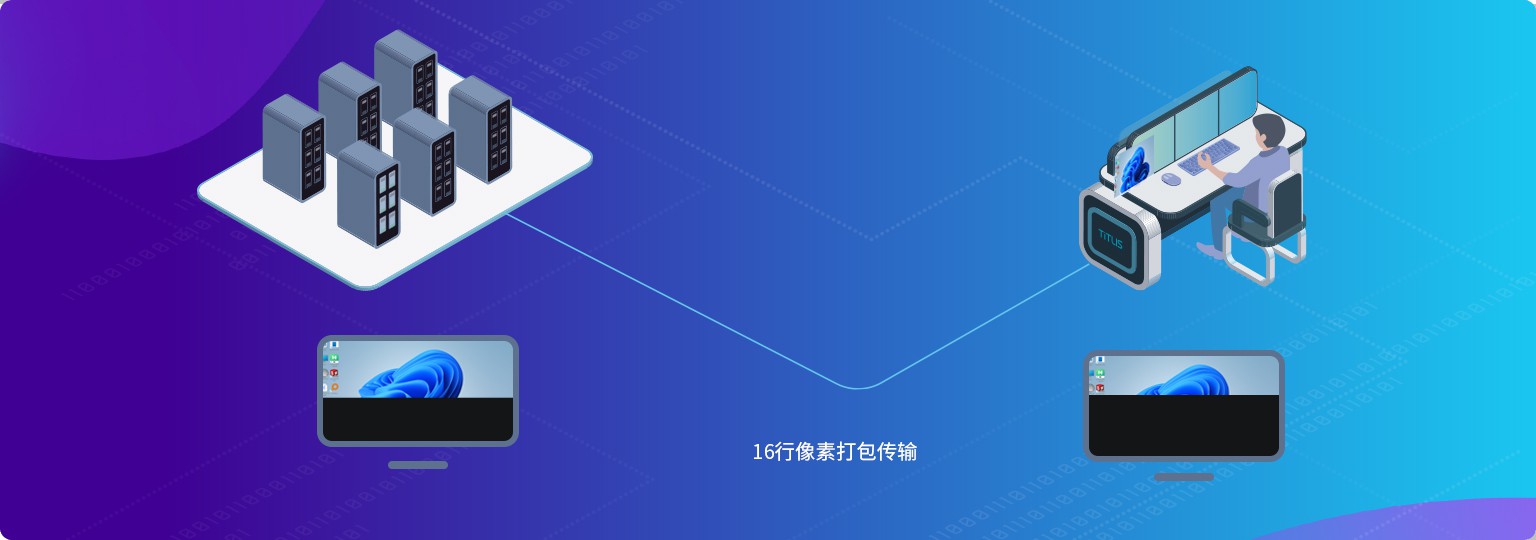
The internal distributed system uses a proprietary protocol for file and information exchange, ensuring the security of data flow within the system. Additionally, it can achieve mutual conversion between proprietary and public protocols, meeting the application requirements of ultra-large-scale networking.

The system adopts multi-stream transmission technology, which not only ensures the transmission quality of local signals and the experience of keyboard and mouse operations, but also satisfies the interconnection, interoperability, and mutual control between superior and subordinate control centers with minimal bandwidth resources.

This system breaks the traditional design concept of matrix and distributed architectures, adopting a design approach that takes each console as a unit. The operation of a single console is no longer constrained by core switching equipment, reducing the risk of system operation. Through power supply design, redundant link design, node backup design, and other measures, the system ensures operational stability and meets the application requirements of high reliability, high stability, and high security in the rail transit industry.

With KVM (Keyboard, Video, Mouse) control at the console, convenient business switching can be achieved. Console personnel can access multiple business computers within their permissions in the data center simply by clicking with a mouse. The visual status of signal sources helps console operators easily identify and quickly switch between them.

Through various push methods within consoles, between consoles, and between consoles and large screens, efficient work by operators can be achieved.
Main Screen Push: Suitable for operations within a console, where a specific window is pushed to the main screen for display.
Console Push: Signals can be pushed between consoles, simultaneously to multiple consoles, and support is provided for pushing keyboard and mouse control rights together, facilitating collaboration.
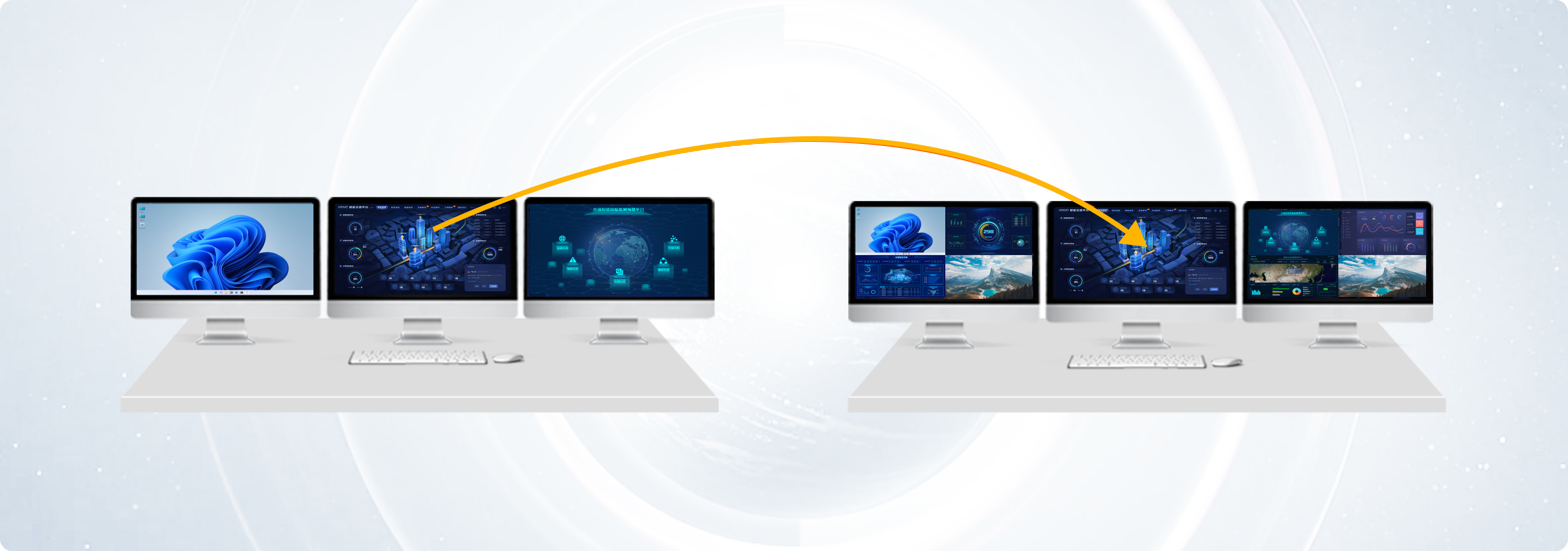
It enables convenient business switching. Console personnel can access multiple business computers within their permissions in the data center simply by clicking with a mouse. The visual status of signal sources helps console operators easily identify and quickly switch between them.

It supports screen splitting, allowing multiple split-screen images to be displayed on a single screen, thereby expanding the scope of information that can be viewed by console personnel. Operators can customize the display mode of each screen for flexible application.

It achieves flexible display of different input signals on the tiled screen, including effects such as picture splicing, overlaying, roaming, and scaling. The signals from the tiled screen and the signals from the console workspace can be uniformly managed and controlled, facilitating sharing and collaboration.
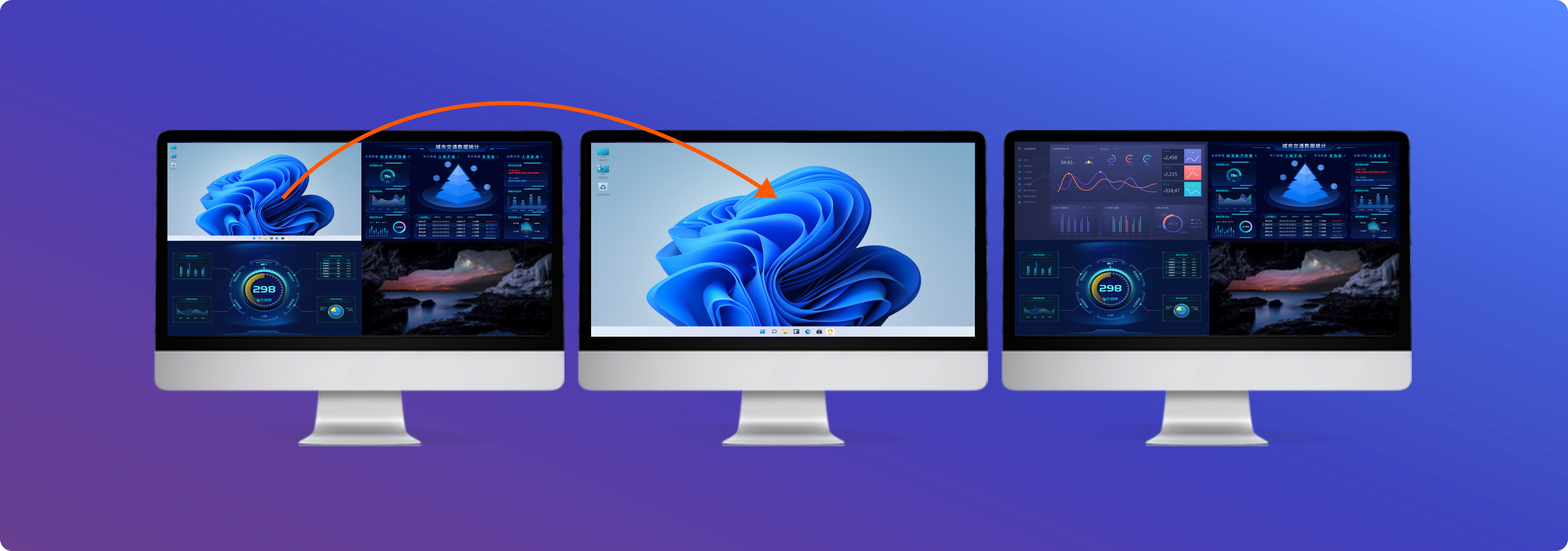
It supports seamless integration with the sound alarm of the dispatch business system. When multiple dispatch business systems trigger alarms, the alarm can be transmitted through the audio channel of the console management system with sound mixing, allowing for alarm expansion and integration with the console's light strips for audio-visual linked alarms.
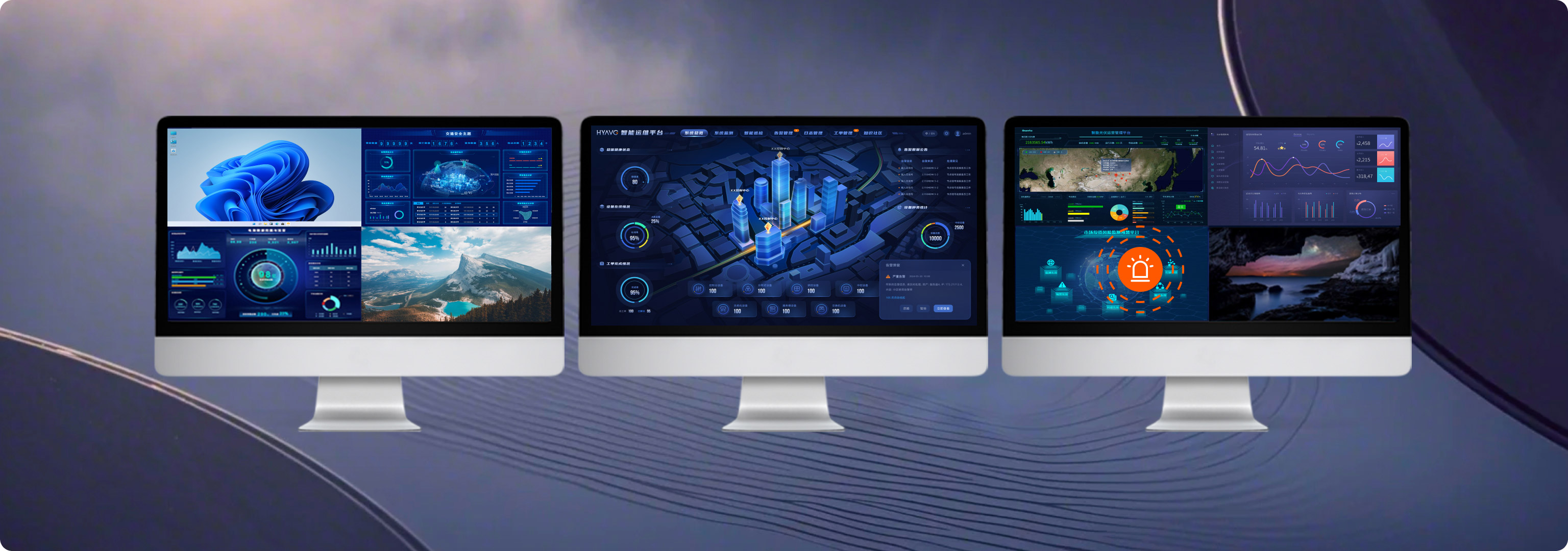
It supports detailed user permission management, allowing the creation of any number of users and the assignment of different permissions. Accounts with different permissions can only view specified signal sources and process business information within their respective permissions.

Through the data transparent transmission function, signals from USB drives can be accessed into the system, allowing easy manipulation of USB drives and other removable storage devices. Access to the data transparent transmission function requires an account, and administrators have the authority to disable this function for any account, ensuring the security and confidentiality of important data.

The system adopts various access requirements based on different technologies, achieving physical isolation between the local area network (LAN) of the console management system and the data network of the virtualization system, thereby ensuring the safety of system operation.

